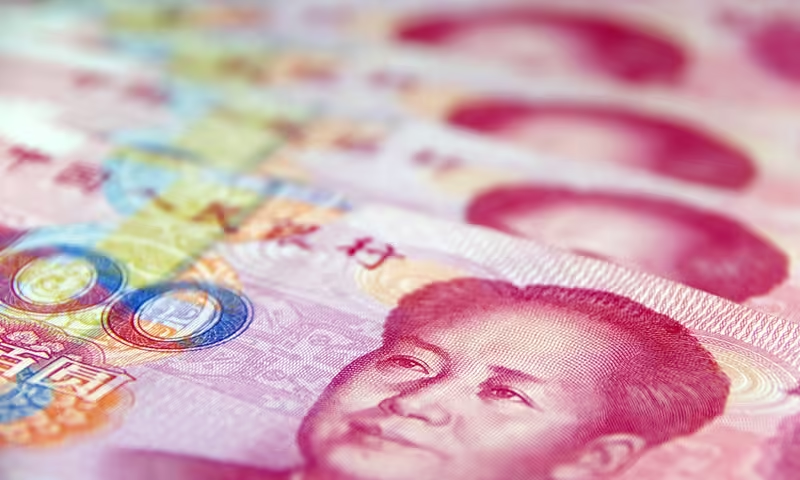China’s shift to a “moderately loose” monetary policy signals a response to domestic economic pressures and external challenges, including a potential trade war, with an emphasis on increased stimulus and growth.
China’s top policymakers have recently unveiled an unprecedented shift in the country’s monetary and fiscal strategies, signaling a broader commitment to economic stimulus and recovery. This shift comes at a crucial time, as Beijing braces for both internal and external economic pressures, including the potential for a second trade war with the U.S. under President-elect Donald Trump. The Politburo, the Communist Party’s highest decision-making body, announced plans to implement a “moderately loose” monetary policy in 2025, marking the first such shift in 14 years. This new stance is a clear departure from China’s previously cautious “prudent” approach, signaling a more proactive effort to tackle economic challenges.
Read more: China Cuts Interest Rates Again As Economic Growth Hits The Brakes!
A Historical Shift in Monetary Strategy
China’s move to adopt a “moderately loose” monetary policy is significant in the context of its previous approach. Since the 2011 shift away from a “moderately loose” stance that was adopted during the Global Financial Crisis, China has maintained a “prudent” policy, aiming to balance growth with inflation control. However, the country now finds itself in a different economic environment, where the anticipated post-pandemic economic boom has not materialized. Despite the introduction of various stimulus measures in recent months, the expected recovery has been slow. With inflation risks under control and the global economy facing new challenges, Beijing is now prioritizing economic growth and stability.
The Politburo’s decision reflects an urgent need to support China’s economy, which has faced multiple challenges in recent years, from slowing domestic demand to escalating trade tensions. The shift in monetary policy, along with a more proactive fiscal stance, is designed to inject liquidity into the economy, stimulate growth, and stabilize key markets.
The Impact of External Pressures
One of the primary motivations behind this policy shift is the looming threat of a second trade war between China and the United States. With Donald Trump set to take office in January, his administration has already signaled its intention to impose tariffs on Chinese exports, which could significantly affect China’s economy. The threat of a 60% tariff on Chinese goods would exacerbate existing pressures on China’s trade relations, potentially disrupting supply chains and hurting key industries.
In response, Chinese policymakers are focused on stabilizing critical economic sectors, including property and stock markets, which have been volatile in recent months. The commitment to stabilize these markets is part of a broader strategy to shore up investor confidence, which has been shaken by global uncertainties and internal economic challenges.
Also Read: China’s Approach to Global Governance
Monetary and Fiscal Stimulus: What’s Next for China’s Economy?
To counteract the negative effects of global geopolitical tensions and trade disruptions, China’s government is preparing to deploy a range of stimulus tools, including rate cuts, asset buying, and fiscal expansions. The increased emphasis on “extraordinary counter-cyclical policy adjustment” reflects a willingness to utilize unconventional measures to stabilize the economy and support growth.
The People’s Bank of China (PBOC) has already implemented several rounds of interest rate cuts and reduced the reserve requirements for banks. Despite these measures, however, the impact on borrowing and economic activity has been muted. Policymakers are expected to roll out additional measures, including a potential ramp-up in government spending, to boost economic momentum.
A key area of focus will be addressing the slowdown in consumer and business spending, which has remained tepid despite the efforts to ease monetary conditions. The government is likely to prioritize infrastructure investment, which has historically been a reliable driver of growth. Additionally, the central bank may expand its role in supporting key industries, such as technology and electric vehicles, to adapt to evolving market dynamics.
Stabilizing Property and Stock Markets
The Politburo’s statement also included a commitment to stabilize the property and stock markets, which have been under pressure due to weak consumer sentiment and concerns about the broader economic outlook. The property market, in particular, has been a key area of focus for the government, with rising debt levels among property developers and falling home prices leading to concerns about the sector’s health. A prolonged downturn in real estate could have ripple effects throughout the economy, as housing is a significant driver of both consumer spending and investment.
In addition to monetary measures, fiscal policy will play a crucial role in stabilizing markets. The government has signaled an intention to ramp up fiscal spending and expand social safety nets, which could provide a boost to household income and consumption. This approach aims to balance the need for short-term stimulus with long-term economic stability.
The Role of Generative AI and Technological Advancements
The rise of generative AI and advancements in technology also play a role in China’s economic outlook. As new technologies reshape global industries, China is looking to leverage these innovations to support economic growth. While generative AI offers potential benefits in terms of predictive modeling and efficiency, it also presents risks, such as increased costs and the possibility of reliability issues. Policymakers will need to carefully navigate the opportunities and challenges presented by this rapidly evolving technological landscape.
Looking Ahead: China’s Economic Growth Targets
The shift in China’s monetary policy comes at a time when growth targets are being reevaluated. While the government has traditionally set ambitious GDP growth targets, there is increasing speculation that China’s growth target for 2025 could be set around 5%. This would mark a more cautious approach, reflecting both domestic challenges and the uncertain global economic environment.
Despite these challenges, the Politburo’s decision to embrace a more “moderately loose” monetary policy signals a commitment to supporting growth and stability. The road ahead will likely require continued flexibility and a willingness to deploy new policy tools to address evolving risks.
In conclusion, China’s new approach to monetary and fiscal policy marks a significant shift that reflects both internal economic needs and external challenges. With a more proactive stance on fiscal policy, increased stimulus measures, and a commitment to stabilizing key markets, China is positioning itself to navigate the uncertainty of 2025 and beyond.





